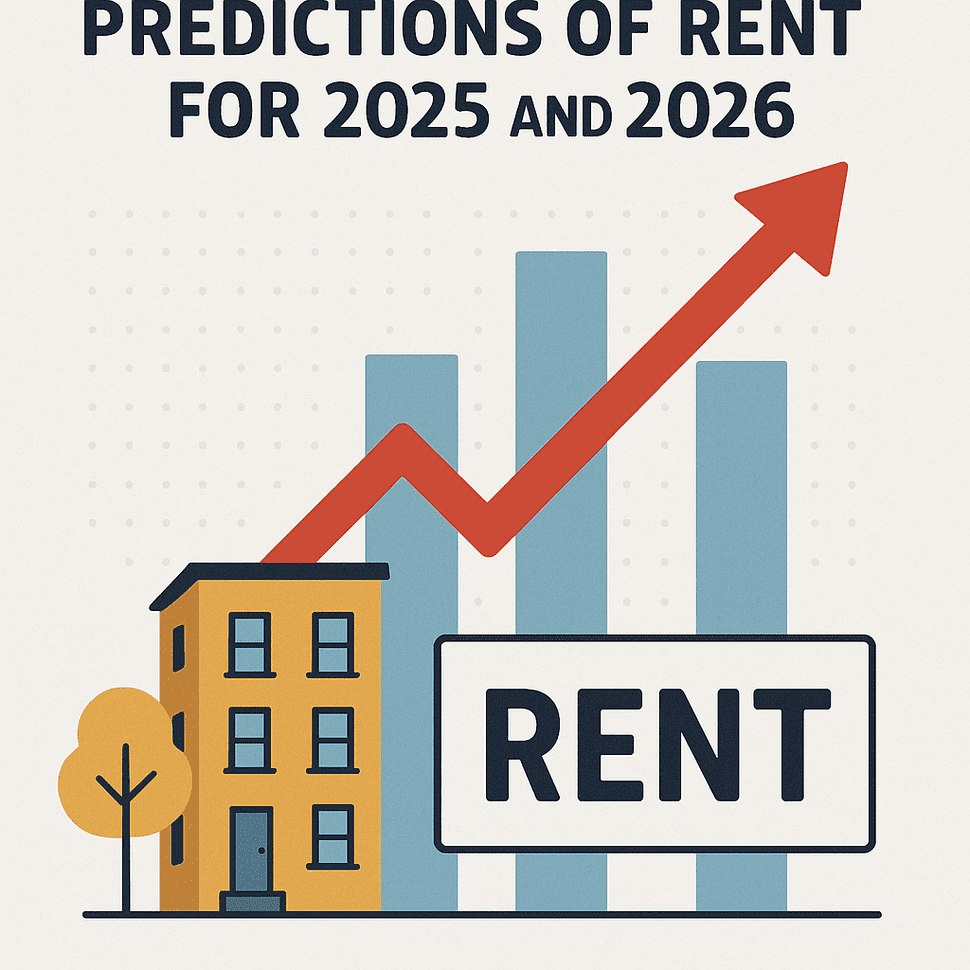
After investing in rentals for over 20 years, I’ve learned one thing for sure: rent markets move like a roller coaster. You either hang on for the ride or get tossed out somewhere between recession drops and demand spikes. So, if you’re a landlord or thinking of becoming one, it’s time to buckle up—because 2025 and 2026 are shaping up to be interesting years for rent prices.
Let’s break it down simply. (And hey, I’ll try to make this fun. If you’re reading this on a toilet break, at least let’s make it worth your time.)
What Just Happened? A Quick Recap of 2020–2024
We all remember the rental market from 2020 to 2023—rents were growing like weeds on miracle grow. It didn’t matter if it was a two-bedroom or a closet with AC—prices were through the roof. But that kind of growth wasn’t sustainable.
In 2024, things cooled off. Multifamily developers went wild, delivering a tsunami of new units, especially in hot metros like Austin, Phoenix, and Tampa. This oversupply led to:
-
Big concessions (hello, 2 months free!)
-
Renewal discounts (when was the last time your landlord offered you a discount?)
-
And a temporary shift of power: renters had the upper hand.
But here’s the twist most people aren’t seeing…
Multifamily Mayhem Is Temporary: The Supply Cliff Is Coming
Yes, multifamily inventory ballooned—but guess what? We’re now seeing a sharp drop in new starts.
Developers are pulling back. High interest rates, construction costs, permitting delays—you name it. According to Yardi Matrix and CoStar data, the pipeline for 2025–2026 is already thinning out. In fact, less than half the usual new supply is expected to hit the market next year.
That’s a setup for one thing: a supply crunch.
When that happens—and it always does—rents tend to rebound faster than most landlords can raise their eyebrows.
Single-Family Rentals: The Quiet Champions
Now, while multifamily has been out here playing musical chairs with incentives, single-family rentals have stayed solid.
Families want yards. They want garages. They want to live next to other families and not be fighting over laundry room slots. And let’s be real—multifamily perks don’t beat peace and quiet.
Here’s what I’m seeing:
-
SFRs are not offering crazy concessions.
-
Vacancy rates are lower.
-
Demand is steady—even increasing in suburbs.
That’s why I keep saying: if multifamily gets maxed out and stops adding new supply, the overflow demand has to go somewhere. Guess where it’s heading? Yep—your single-family rental.
So… Will Rents Rise in 2025 and 2026?
Here’s my personal take, backed by trends, data, and a few gray hairs:
-
Multifamily rents will stabilize by mid-2025, then slowly increase. Once those move-in specials run dry and those units fill up, there won’t be enough new inventory to replace them.
-
Single-family rents will rise faster, especially in high-growth metros with limited new construction. Think Florida, Texas, Arizona.
-
Markets with strong job growth and in-migration will outperform. If you’re in Tampa, Orlando, or Jacksonville—you’re sitting on gold.
-
Concessions will fade by late 2025. Don’t get too comfy with those freebies—once landlords sense leverage returning, it’s game on.
-
By 2026, I expect national rent growth to accelerate again, especially in the single-family space. Not like the 2021 craziness—but enough to reward landlords who held tight.
Why This Matters for Landlords (And Why the Public Is Sleeping On It)
Here’s what’s wild—most people aren’t paying attention to this yet. Tenants think the deals are here to stay. Media is still talking about “rent drops.” But smart investors know better.
If demand stays steady—and supply drops off a cliff—we’re looking at a textbook squeeze.
This is when landlords who are positioned well start to increase cash flow, reduce vacancy, and raise rents strategically.
My Game Plan for 2025–2026
Let me walk you through how I’m preparing:
-
Holding onto quality rentals: I’m not selling anything I don’t have to. The cash flow potential is too good in the next two years.
-
Refinancing where possible: Locking in lower rates when the Fed starts cutting—probably in late 2025—means I can boost net income.
-
Upgrading without overdoing it: No granite countertops for C-class tenants, but I’m replacing anything that screams 1998.
-
Training property managers to negotiate smarter renewals. This is the year where renewal strategy matters more than ever. Offer small upgrades, lock in great tenants, and plan modest rent bumps.
-
Investing in tech to monitor market trends in real time. You’ve got to know when to push and when to hold.
Watch Out For These Markets
I’m betting on markets like:
-
Tampa & Orlando, FL: Population growth, job expansion, tourism recovery.
-
Dallas & Austin, TX: Yes, Austin is overbuilt—but that won’t last. The fundamentals are still strong.
-
Charlotte & Raleigh, NC: Steady growth, solid schools, and an inflow of remote workers.
Places I’m more cautious about?
-
San Francisco, CA: Expensive to own, tougher regulations, and still not rebounding at the same pace.
-
Portland, OR: Rent control and anti-landlord laws are keeping investor interest low—and supply high.
Tips for Maximizing Rent in the Coming Rebound
Let’s finish with a few practical tips. If you own rentals—or plan to—here’s how to get ahead of the curve:
-
Start prepping renewals now. If your leases end in Q3 or Q4 of 2025, plan those conversations early.
-
Phase out concessions. Slowly reduce incentives so tenants aren’t shocked, but your bottom line improves.
-
Focus on tenant quality. Don’t chase top-dollar rents if it means more turnover. A+ tenants are worth their weight in gold.
-
Keep units clean and functional. You don’t need HGTV upgrades—but fix what matters. Tenants will pay more for comfort and safety.
-
Leverage property managers who get it. Make sure your PM team understands the shift and isn’t stuck in 2023 mindset.
Final Thoughts: Rent’s About to Rise—Will You Be Ready?
If you’re already a landlord, you’re in a great spot—especially if you own single-family properties in growth areas. If you’re thinking of getting in, this next 12-month window might be your last shot to buy before rent growth outpaces your mortgage again.
Remember: real estate is a long game, but knowing when to lean in can supercharge your returns.
And if everyone’s asleep at the wheel? Well, that’s when I double down.
Keep it consistent, stay patient, stay true—if I did it, so can you! Ready to connect and strategize? Contact me at graystoneig.com/ceo – Jorge Vazquez, CEO of Graystone Investment Group & its subsidiary companies and Coach at Property Profit Academy.
Pick your expert. Book your free 15-minute consult now. We are here to help!
Our Top Articles
Jorge Vazquez Featured on “REalizations” Podcast with Andrea Gordon – Full Interview Coming Soon
FOR IMMEDIATE RELEASE Jorge Vazquez Featured on “REalizations” Podcast with Andrea Gordon – Full Interview Coming Soon Tampa, FL [...]
What’s Needed to Remove a Squatter
“Nothing I Can Do”: What It Really Takes to Remove a Squatter in Florida Let me tell you a [...]
Are Five-Year ARM Loans Safe in 2025?
Are Five-Year ARM Loans Safe in 2025? By Jorge Vazquez, CEO of Graystone Investment Group Let’s be real—how many [...]
Property Profit Academy:
✔ Learn to buy properties with little to no money down.
✔ Build a $10M portfolio step by step.
✔ Master strategies like BRRRR and house hacking.









